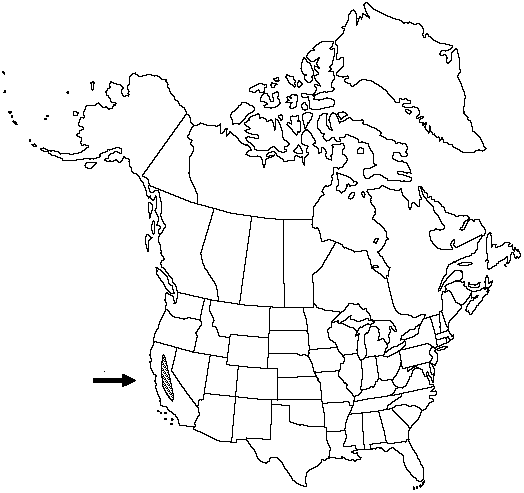Pentagramma pallida
Amer. Fern J. 80: 15. 1990 Pityrogramma triangularis (Kaulfuss). 1920.
Petiole black or nearly so, not shiny, farinose; farina white, especially in young leaves. Blade thin, herbaceous, white-farinose abaxially and adaxially, appearing grayish adaxially when fresh. 2n = 60.
Habitat: Rock crevices and at base of boulders, in drainages and on slopes, rarely on roadbanks, pine and oak woodlands
Elevation: 100–400 m
Discussion
Pentagramma pallida is endemic to the foothills of the Sierra Nevada. C. A. Weatherby (1920), K. S. Alt and V. Grant (1960), and D. M. Smith (1980) agreed that P. pallida is among the most easily distinguishable taxa in the group, particularly in the field. In addition to the key characteristics, the usually blackish, nonlustrous petioles of this species are unique in the genus. Alt and Grant noted a case of apparent hybridization between this species and Pentagramma triangularis in Tuolumne County, California.
Selected References
None.
